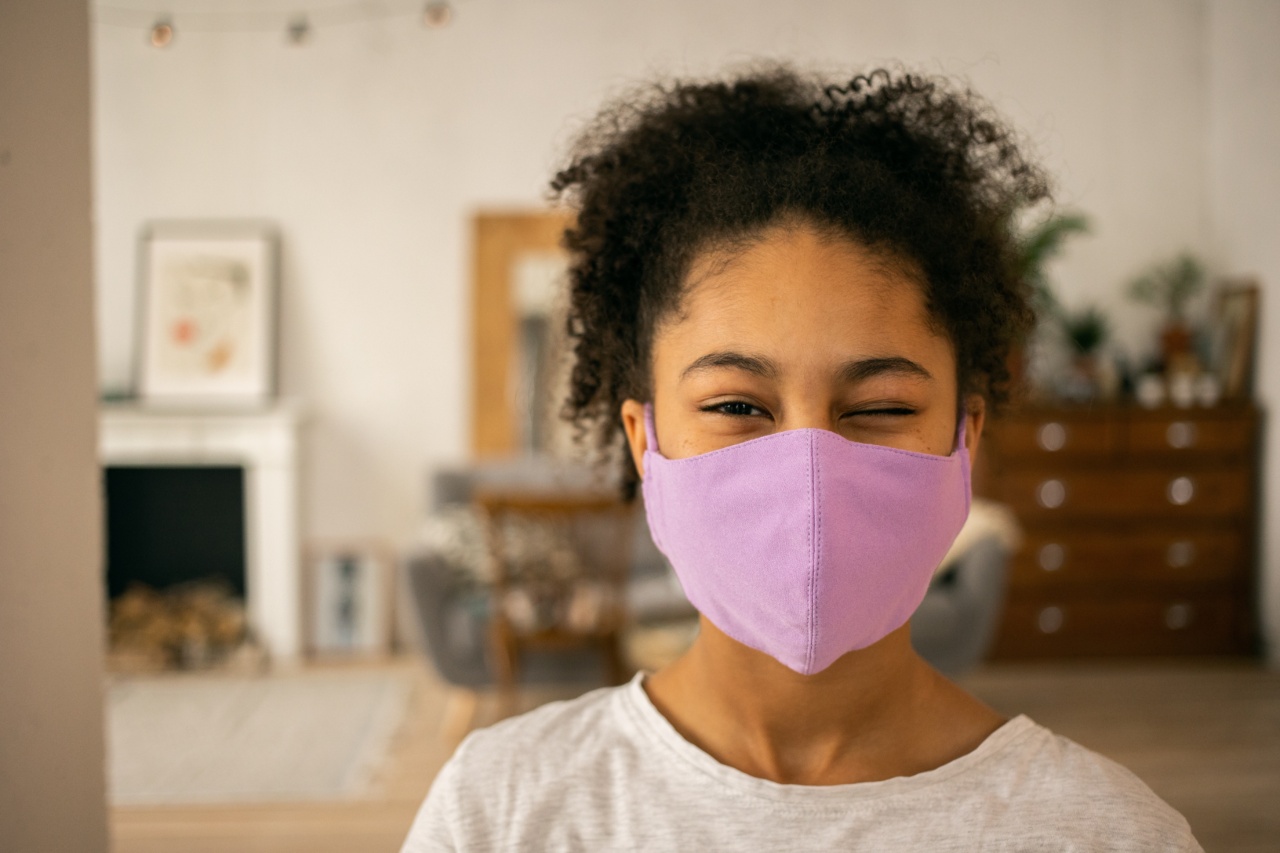Childhood allergies have become increasingly common in recent years, affecting millions of children around the world. Allergies can range from mild to severe and can significantly impact a child’s quality of life.
As a parent, it is crucial to be aware of your child’s allergies and take appropriate measures to keep them safe. This article provides valuable information and practical tips on how to protect your child from allergens and ensure their well-being.
Understanding Allergies
Allergies occur when the immune system reacts abnormally to substances in the environment that are usually harmless. These substances, known as allergens, can trigger an allergic reaction in susceptible individuals.
Common allergens include pollen, dust mites, pet dander, certain foods, insect stings, and medication.
Identifying Allergy Symptoms
Recognizing the signs of an allergy in your child is essential for early intervention and management. Allergy symptoms can vary depending on the type of allergen and the route of exposure. Some typical symptoms include:.
- Sneezing, coughing, or wheezing
- Itchy and watery eyes
- Runny or stuffy nose
- Rashes or hives on the skin
- Abdominal pain, nausea, or vomiting (in food allergies)
- Shortness of breath or difficulty breathing (in severe allergic reactions)
Consulting an Allergist
If you suspect that your child has allergies, it is crucial to consult a pediatric allergist. An allergist specializes in the diagnosis and treatment of allergies and can help identify specific allergens that trigger your child’s symptoms.
They will conduct a comprehensive evaluation, which may include a medical history review, physical examination, and allergy testing.
Creating an Allergy-Friendly Home
One of the most effective ways to keep your child safe from allergens is to create an allergy-friendly environment at home. Here are some essential tips:.
-
Reduce Dust Mites
Dust mites are a common cause of allergies, particularly in children with asthma. To minimize dust mites in your home:.
- Use dust mite-proof covers for mattresses, pillows, and bedding
- Wash bedding in hot water regularly
- Vacuum carpets and upholstered furniture frequently
- Keep humidity levels below 50%
-
Control Pet Allergens
If your child is allergic to pet dander:.
- Avoid keeping pets with fur or feathers
- If you choose to have a pet, keep it out of your child’s bedroom and off furniture
- Regularly bathe and groom the pet to minimize dander
- Vacuum and dust frequently to remove pet allergens from the environment
-
Monitor Indoor Air Quality
Poor indoor air quality can exacerbate allergies and respiratory conditions in children. To improve air quality:.
- Keep the house well-ventilated
- Invest in air purifiers with HEPA filters
- Remove mold and fix any water leaks promptly
- Avoid smoking or exposure to secondhand smoke
-
Practice Food Allergy Safety
If your child has food allergies:.
- Read food labels carefully and avoid allergenic ingredients
- Inform schools, childcare providers, and other caregivers about the allergies
- Encourage your child to carry an epinephrine auto-injector if necessary
- Teach your child about their allergies and how to avoid trigger foods
Allergy Management in School
Ensuring your child’s safety in the school environment requires effective communication and collaboration with school staff, teachers, and other caregivers. Here are some essential steps in managing your child’s allergies at school:.
-
Develop an Allergy Action Plan
Work with your child’s allergist and pediatrician to create a comprehensive allergy action plan. This plan should include:.
- Detailed information about your child’s allergies
- Emergency contact numbers
- Instructions on the administration of medication (if required)
- Strategies to prevent allergen exposure in the school
- Steps to be taken in case of an allergic reaction
-
Educate School Staff
Arrange a meeting with the school nurse, teachers, and other relevant staff to discuss your child’s allergies and the necessary precautions to be taken.
Provide them with copies of the allergy action plan and any required medication, such as antihistamines or epinephrine auto-injectors.
-
Inform Classmates and Parents
Consider informing your child’s classmates and their parents about your child’s allergies. This can help foster understanding and support, encouraging classmates to be mindful of allergens and promoting a safer environment for your child.
-
Regularly Communicate
Maintain open lines of communication with the school regarding your child’s allergies. Update the school on any changes in your child’s condition or medication, and ensure that all necessary precautions are consistently being implemented.
-
Encourage Self-Advocacy
Teach your child about their allergies and how to advocate for themselves in the school setting. Teach them to recognize allergic symptoms, avoid trigger allergens, and communicate their needs to teachers and classmates.
Safety Measures for Outdoor Activities
While it may be challenging to completely eliminate allergens from outdoor environments, you can take certain precautions to reduce your child’s exposure. Here are some safety measures for outdoor activities:.
-
Check Pollen Counts
On high pollen days, limit your child’s outdoor activities, especially during early morning and evening when pollen levels tend to be higher. Keep windows closed and use air conditioning to filter the air inside the house.
-
Protect against Insect Stings
If your child is allergic to insect stings, take the following precautions:.
- Dress your child in long pants, long-sleeved shirts, and closed-toe shoes
- Apply insect repellent on exposed skin
- Keep food and sweet drinks covered during outdoor picnics
- Teach your child to avoid brightly colored clothing and floral-print fabrics, as they may attract insects
-
Food and Medication Allergies on the Go
When going out or traveling:.
- Pack safe, allergen-free snacks and meals for your child
- Carry all necessary medications and emergency supplies, such as epinephrine auto-injectors
- Research nearby medical facilities at your destination
Emergency Preparedness
Despite taking all possible precautions, allergic reactions can still occur. Being prepared for emergencies is crucial to ensure timely and effective management. Here are some essential steps:.
-
Recognize Signs of an Allergic Reaction
Know the signs of a severe allergic reaction (anaphylaxis) and act immediately if they occur. Signs may include difficulty breathing, swelling of the face or throat, a sudden drop in blood pressure, and dizziness or loss of consciousness.
Administer epinephrine if it has been prescribed, and seek emergency medical help.
-
Teach Others How to React
Ensure that family members, caregivers, teachers, and close friends are knowledgeable about your child’s allergies and know how to respond in the event of a severe allergic reaction.
Train them on the proper administration of medications like epinephrine auto-injectors.
-
Create an Emergency Kit
Assemble a comprehensive emergency kit that includes:.
- Epinephrine auto-injectors
- Antihistamines
- Any other prescribed medications
- Emergency contact numbers
- An updated allergy action plan
-
Regularly Review and Update
Review and update your emergency plan, contact numbers, and medication supplies regularly to ensure that everything is current and accessible.
Coping with Allergies
Allergies can pose challenges for both children and their families. Here are some tips for coping with allergies:.
- Join support groups or online communities for parents of children with allergies. These platforms can provide valuable information, resources, and a supportive network.
- Educate your child about their allergies and help them understand the importance of avoiding allergens. Encourage them to take responsibility for their own safety.
- Teach your child strategies for managing allergy symptoms, such as proper handwashing, avoiding rubbing eyes, and using tissues for sneezing or coughing.
- Involve your child in meal planning and preparation to ensure they have a well-balanced diet while avoiding allergenic foods.
- Stay positive and help your child focus on the things they can do rather than what they cannot. Encourage them to participate in activities they enjoy and empower them to navigate social situations confidently.
Conclusion
Keeping your child safe from allergies requires diligence, effective communication, and a multi-faceted approach.
By creating allergy-friendly environments, collaborating with healthcare professionals and school staff, implementing safety measures outdoors, and being prepared for emergencies, you can significantly reduce the risk to your child’s well-being. Remember to provide continuous support to your child as they cope with allergies, helping them navigate daily challenges and thrive in all aspects of their life.































